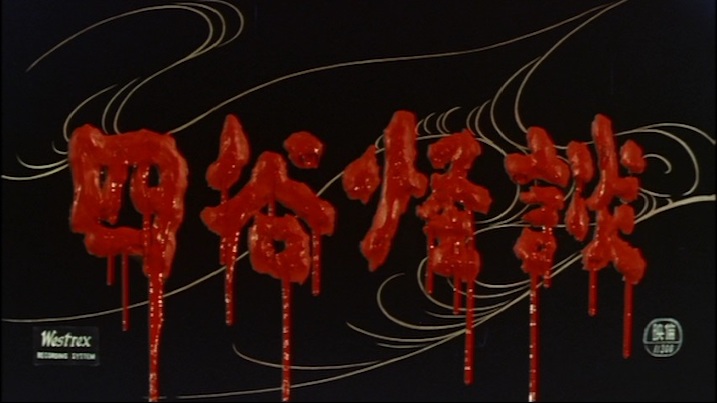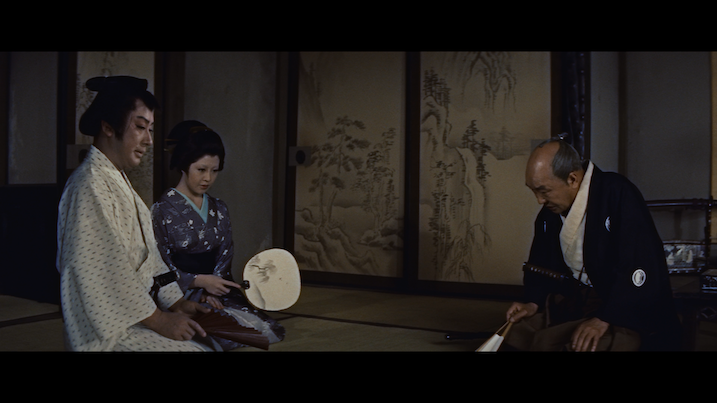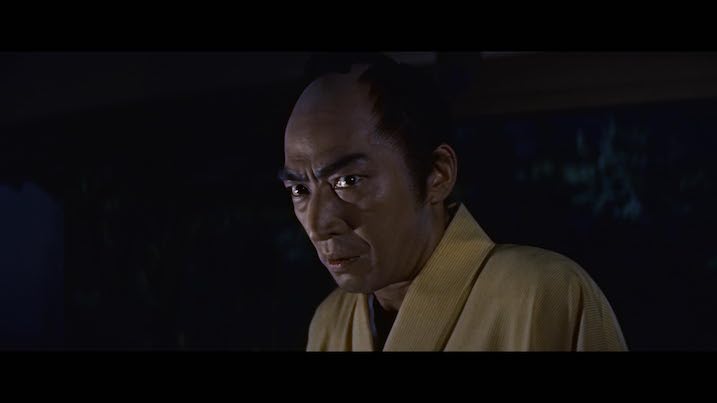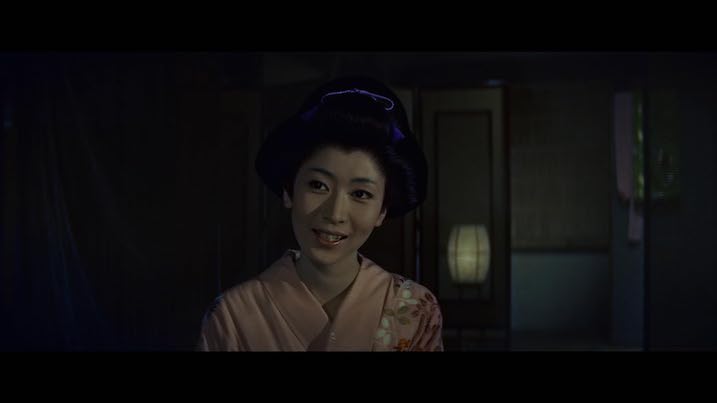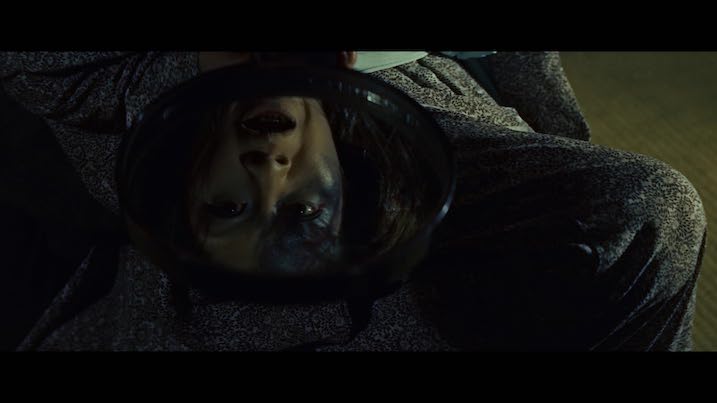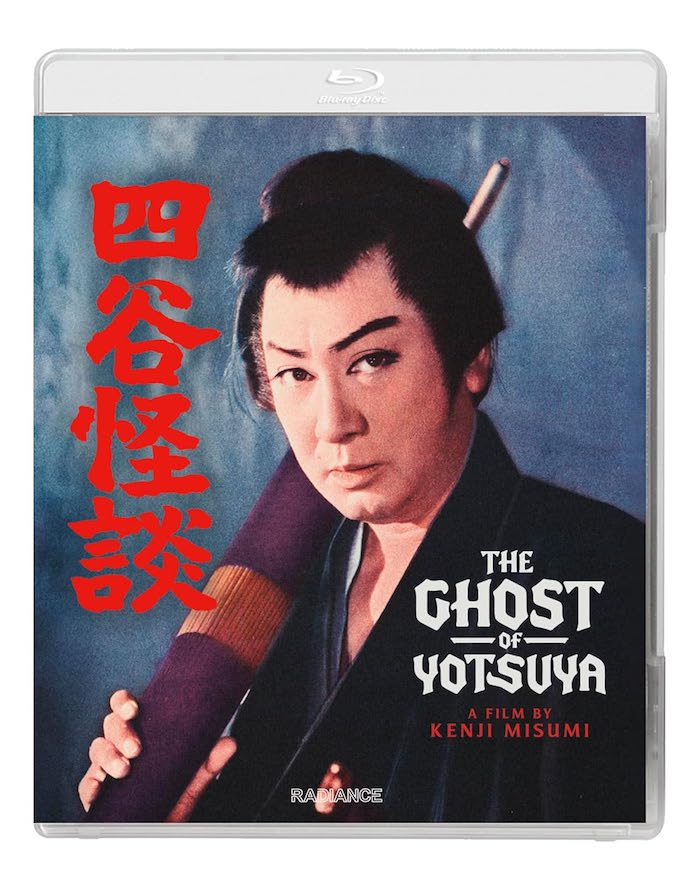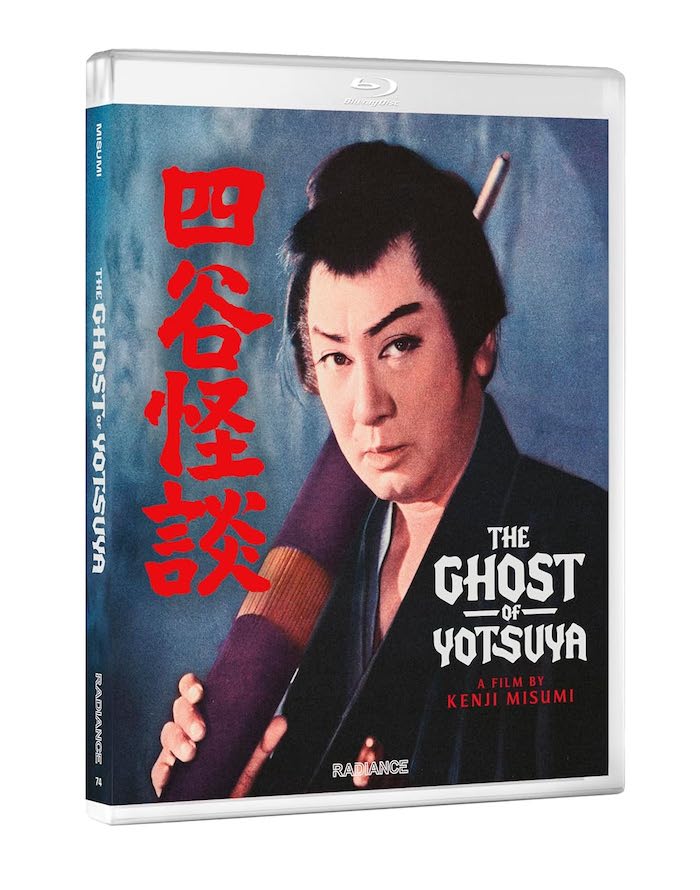The Ghost of Yotsuya (Blu-ray Review)
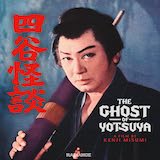 A tale of betrayal, greed, and supernatural vengeance, The Ghost of Yotsuya remains one of Japan’s most enduring horror stories, and this Radiance Films Blu-ray gives it a crisp, shadow-soaked revival. Released in 1959 and adapted from the famed kabuki play, the film mixes ghostly chills with a slow-burn descent into human darkness. Now presented in high definition and playable on both Region A and B players, this edition invites a new audience to experience its eerie beauty and lingering sense of dread.
A tale of betrayal, greed, and supernatural vengeance, The Ghost of Yotsuya remains one of Japan’s most enduring horror stories, and this Radiance Films Blu-ray gives it a crisp, shadow-soaked revival. Released in 1959 and adapted from the famed kabuki play, the film mixes ghostly chills with a slow-burn descent into human darkness. Now presented in high definition and playable on both Region A and B players, this edition invites a new audience to experience its eerie beauty and lingering sense of dread.
Film 




The story of The Ghost of Yotsuya has been told many times, but Kenji Misumi’s 1959 take is one of the most chilling. Betrayal, greed, and revenge are all here, wrapped in an atmosphere that tightens like a noose. This isn’t a rush to the scares, it pulls you in slowly, making the inevitable fall feel all the more fatal.
Misumi plays with contrast. Early scenes feel polite and sunlit, yet you can sense the cracks forming. When night falls, shadows take over. Lantern light flickers across strained faces. The supernatural doesn’t burst in, it creeps, quietly taking control before you even notice.
Set in the Ronin/Shogun/Samurai era, the film drips with Gothicism once the horror hits. There’s moral rot under the period elegance, and it’s easy to think of Tales from the Crypt — the same kind of poetic justice that makes you shiver. Cinematographer Yukimasa Makita uses the 2.39:1 frame to full effect, letting unease slip in from the edges of the image while keeping the period detail rich.
Grounded in Japanese period horror but timeless in its sting, The Ghost of Yotsuya blends mood and menace with precision. Its themes of corruption, obsession, and karmic payback still cut deep, and the images are likely to follow you long after the credits roll.
Video 




NOTE: Stills are provided for promotional use only and are not from the Blu-ray.
Encoding: MPEG-4 AVC
Resolution: 1080p
Aspect Ratio: 2.39:1
Region: A, B
HDR: N/A
Layers: BD-50
Clarity and Detail: The image boasts a sharp, filmic presentation, with fine textures in costumes, props, and period sets coming through naturally. Grain is present but stable, giving the transfer an authentic 35mm feel.
Depth: Foreground and background separation is strong, especially in outdoor sequences and wider interior shots, adding dimension to the eerie staging.
Black Levels: Blacks are deep and generally stable, though a few darker scenes lean slightly toward crush, likely tied to the original cinematography rather than the transfer.
Color: The palette favors muted, earthy tones, with occasional bursts of richer hues in costumes and set dressing. These moments stand out all the more against the film’s shadow-heavy aesthetic.
Flesh Tones: Skin tones look natural under neutral lighting but occasionally shift warmer in candlelit interiors, faithful to the source photography.
Noise and Artifacts: The presentation is clean with no major print damage or compression issues. Minor speckling is visible in a few scenes but doesn’t detract from the overall experience.
Audio 




Audio Format(s): Japanese LPCM 2.0 (Mono)
Subtitles: English
Dynamics: The mono track is clean and well-balanced, preserving the film’s atmospheric sound design with clarity. Subtle effects like footsteps, sliding doors, and rustling fabrics come through without distortion.
Height: N/A
Low Frequency Extension: N/A
Surround Sound: N/A
Dialogue: Spoken lines are clear and intelligible, with no hiss or muffling. The mix keeps vocals front and center, allowing the performances to carry their intended weight.
Extras 




Radiance Films keeps the supplements focused but worthwhile. The disc includes a new interview with acclaimed filmmaker Kiyoshi Kurosawa, offering insight into the film’s influence and place within Japanese horror cinema. Author Kyoko Hirano contributes a visual essay tracing the history and various adaptations of the Ghost of Yotsuya story, giving valuable cultural and historical context. A theatrical trailer rounds out the package.
Bonus Materials
- New interview with filmmaker Kiyoshi Kurosawa
- A visual essay on the history and adaptations of the classic Ghost of Yotsuya story by author Kyoko Hirano
- Trailer
Summary 




The Ghost of Yotsuya remains a chilling slice of Japanese period horror, and Radiance Films has given it a clean, respectful Blu-ray release that plays beautifully on both Region A and B players. The high-definition transfer highlights the film’s shadowy Gothic textures, and the small but meaningful set of extras add value without padding. For fans of Japanese ghost stories or collectors of classic world cinema, this is an easy recommendation.
You can explore more of our coverage on Radiance Films releases right here.
The Ghost of Yotsuya is available on Blu-ray.
ORDER NOW!
Paid Advertising Link
